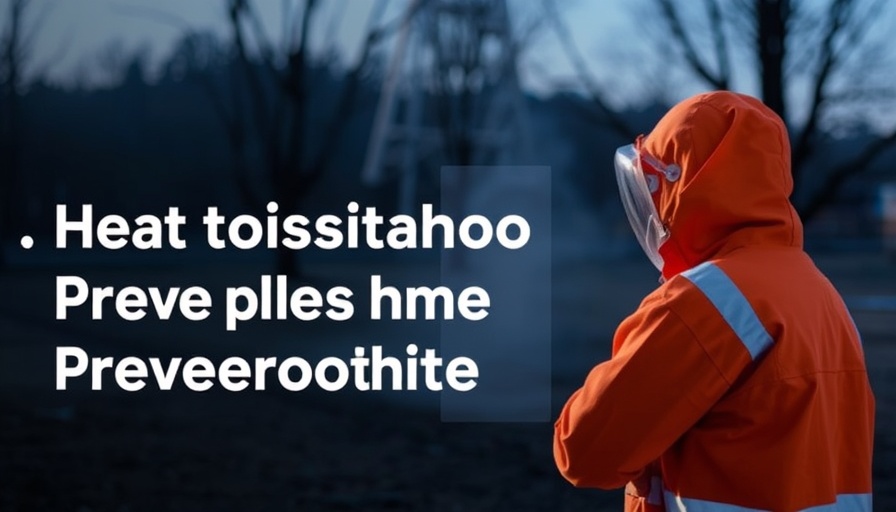
Understanding Heat Illness in the Workplace
As summer approaches, the risk of heat-related illnesses in workplaces intensifies, particularly for young workers who may be inexperienced in managing heat stress risks. Recent resources developed by OSHA aim to combat this issue head-on, recognizing that workers under 25 years old are twice as likely to experience workplace injuries than their older counterparts. Many of these young workers may be embarking on their first jobs and might not know how to express safety concerns or seek help when needed.
New OSHA Resources Tailored for Safety
The two new resources from OSHA are specifically designed to address these vulnerabilities. The first is a fact sheet for young workers, detailing critical precautions to take before starting work in the heat. It also outlines symptoms of heat stress and emergency conditions, along with first aid measures and guidelines for when to call for additional assistance. Meanwhile, the second resource, Plan and Respond to a Heat Emergency, is a five-step guide aimed at employers, managers, and supervisors to facilitate effective communication about heat safety in the workplace.
Why Awareness Matters: Protecting Lives Through Education
OSHA highlights the importance of proactive education regarding heat safety. The goal of enhancing awareness among younger employees and managers is not only to protect their health but to ensure a safer work environment overall. Engaging conversations about the risks of heat exhaustion and stroke can significantly impact employees' understanding and readiness to act in emergencies.
Best Practices for Managing Heat Stress
OSHA emphasizes five key strategies for managing heat stress at work:
- Educate Workers: Train employees on recognizing the signs of heat illness and implementing effective response strategies.
- Encourage Hydration: Regular hydration throughout the workday is crucial for preventing heat-related issues.
- Implement Rest Breaks: Taking breaks in shaded or cool areas can help regulate body temperature and reduce the risks of overheating.
- Use the Buddy System: Promote teamwork among workers encouraging them to watch out for each other’s well-being.
- Establish Reporting Procedures: Ensure workers know whom to contact if they notice unsafe conditions.
Implementing these practices not only contributes to a safer working environment but can ultimately lead to increased productivity and lower healthcare costs for employers.
The Role of Employers in Preventing Heat Illness
Employers play a pivotal role in preventing heat illnesses through effective training, providing necessary resources, and fostering a safety-first culture. As business owners and facility managers, the responsibility falls on them to prioritize the health and safety of their teams. By integrating these new OSHA resources into their daily operations, companies can enhance awareness and preparedness for heat-related emergencies.
Prepare Now: Safeguarding Your Workforce
Ensuring that your workforce is equipped with the knowledge and tools to manage heat illness is an essential part of workplace safety. With summer temperatures on the rise, it’s imperative that employers take immediate action to educate their teams about heat stress. By utilizing the resources from OSHA and fostering an open dialogue about safety, businesses can not only protect their employees but also create a more resilient workforce.
Take action today: Review OSHA's resources and implement these guidelines to safeguard your employees from heat-related hazards. Together, we can build a culture of safety in the workplace!
 Add Row
Add Row  Add
Add 




Write A Comment